Frameworks Enduro
Wheel Size: 29’’ front / 27.5’’ rear
Travel: 170 mm rear / 170 mm front
Geometry Highlights:
- Sizes offered: S, M, L, XL
- Headtube angle: 63.75°
- Reach: 480 mm (size Large)
- Chainstay length: 455 mm (size Large)
Frame Material: Aluminum with carbon fiber rear triangle
Price: Frame and shock starting at $3,999 USD
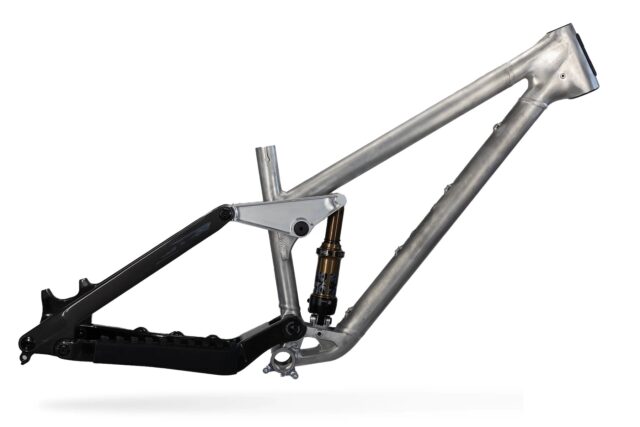
Intro
Though they’re a new, small brand, chances are you’ve heard of Frameworks. The brainchild of World Cup racer Neko Mullaly, Frameworks started by building a purpose-built Downhill race bike with a focus on simplicity, reliability, and a predictable ride feel. Even top-level Downhill racers spend most of their time on shorter travel bikes for training and daily riding, so it wasn’t all that surprising to see Frameworks also working on an Enduro bike that brought the spirit of the DH frame to a pedal-friendly package.
While most attention has focused on Frameworks’ DH frame launch late last year and the team’s successful 2024 World Cup season, Neko and the team are not ones to rest on their laurels. Frameworks has officially launched the production version of their Enduro frame, and it has a whole host of refinements to construction and geometry — read on for more.
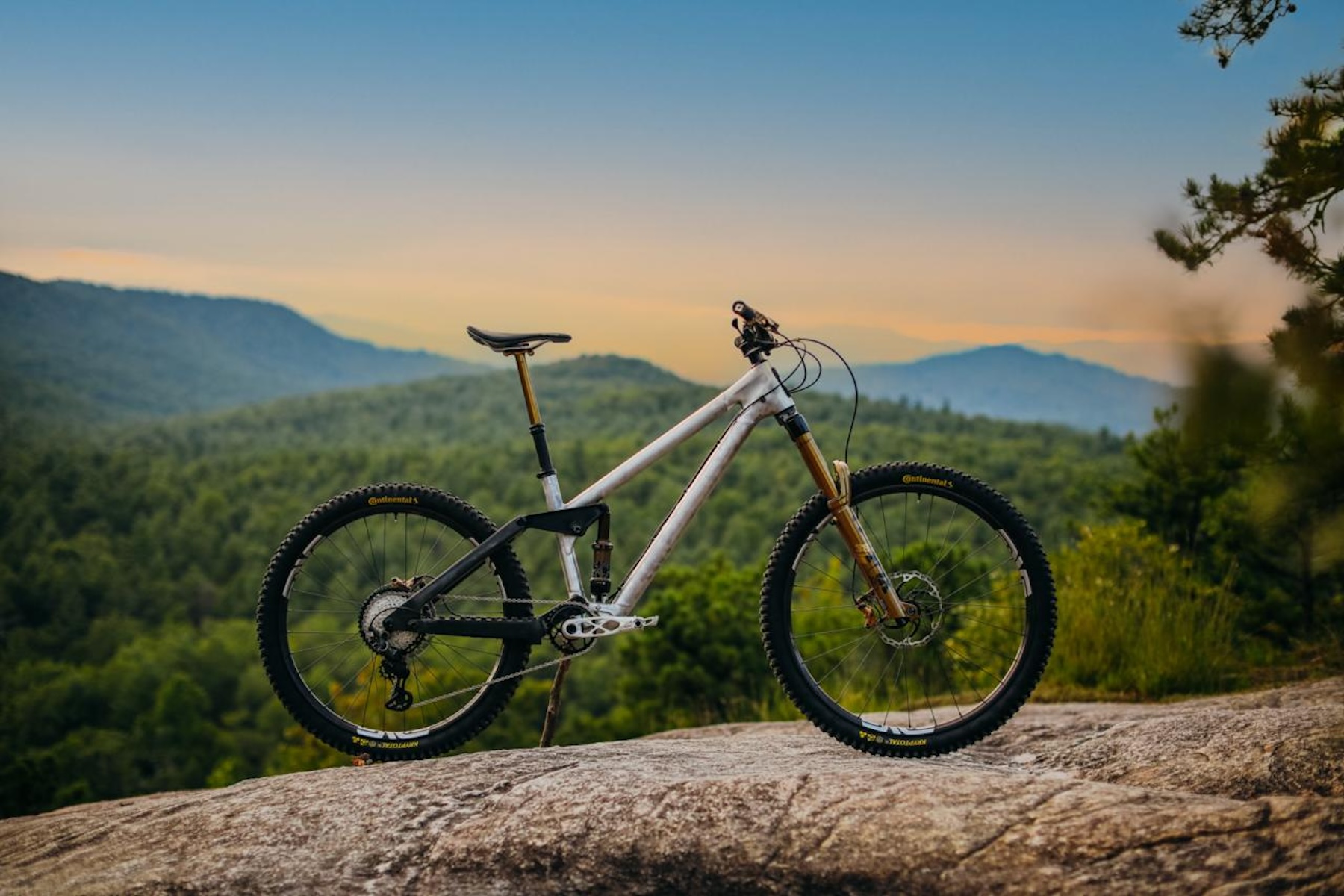
The Frame
Anyone following the development of Frameworks’ DH and Enduro bikes will know that Neko and the team have not been shy about trying different construction techniques. While much of the experimentation with steel, lugged aluminum, and other constructions has been centered around the DH frame, Frameworks has also incorporated those learnings into a very interesting end result with the Enduro frame.
As with their DH frame, Frameworks has paired a 6061 T6 aluminum front triangle with a carbon fiber rear triangle. A closer look at the front triangle shows some significantly different construction methods, though (and ones we wouldn’t be surprised to see on the next DH model). With the Enduro frame, the headtube junction is a one-piece machined unit, which is then welded to the top tube and downtube slightly behind the head tube. A similar approach is taken at the bottom bracket and lower pivot assembly along with the upper rocker pivot. Machining helps to improve tolerances in these critical junction areas, but also means that the frame is relatively simple to make — the entire front triangle is composed of 3 tubes and 3 machined parts. Frameworks talks a bit more about this in their launch video as well (which also features a lot of footage of Neko Mullaly annihilating corners — it’s worth a watch).
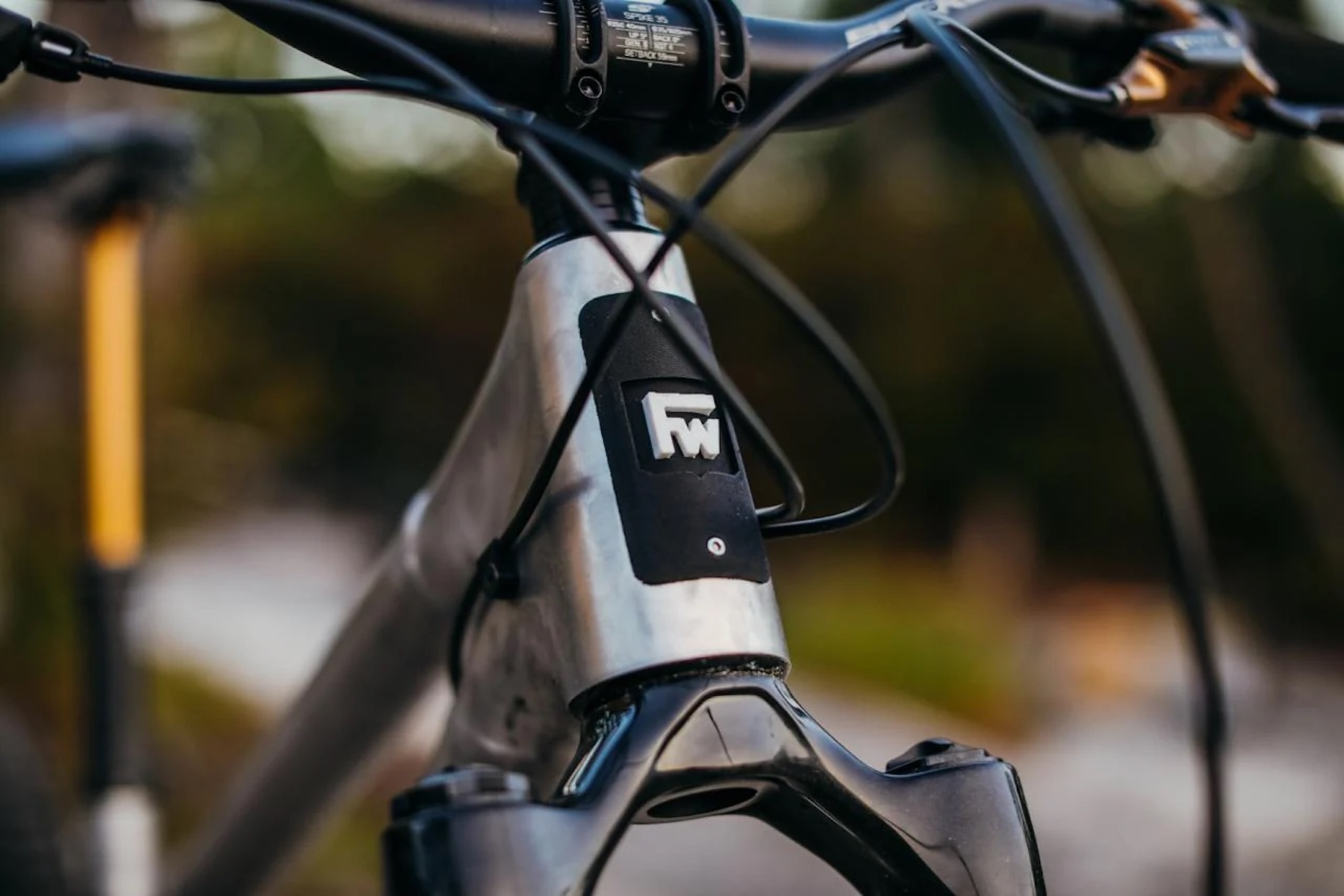
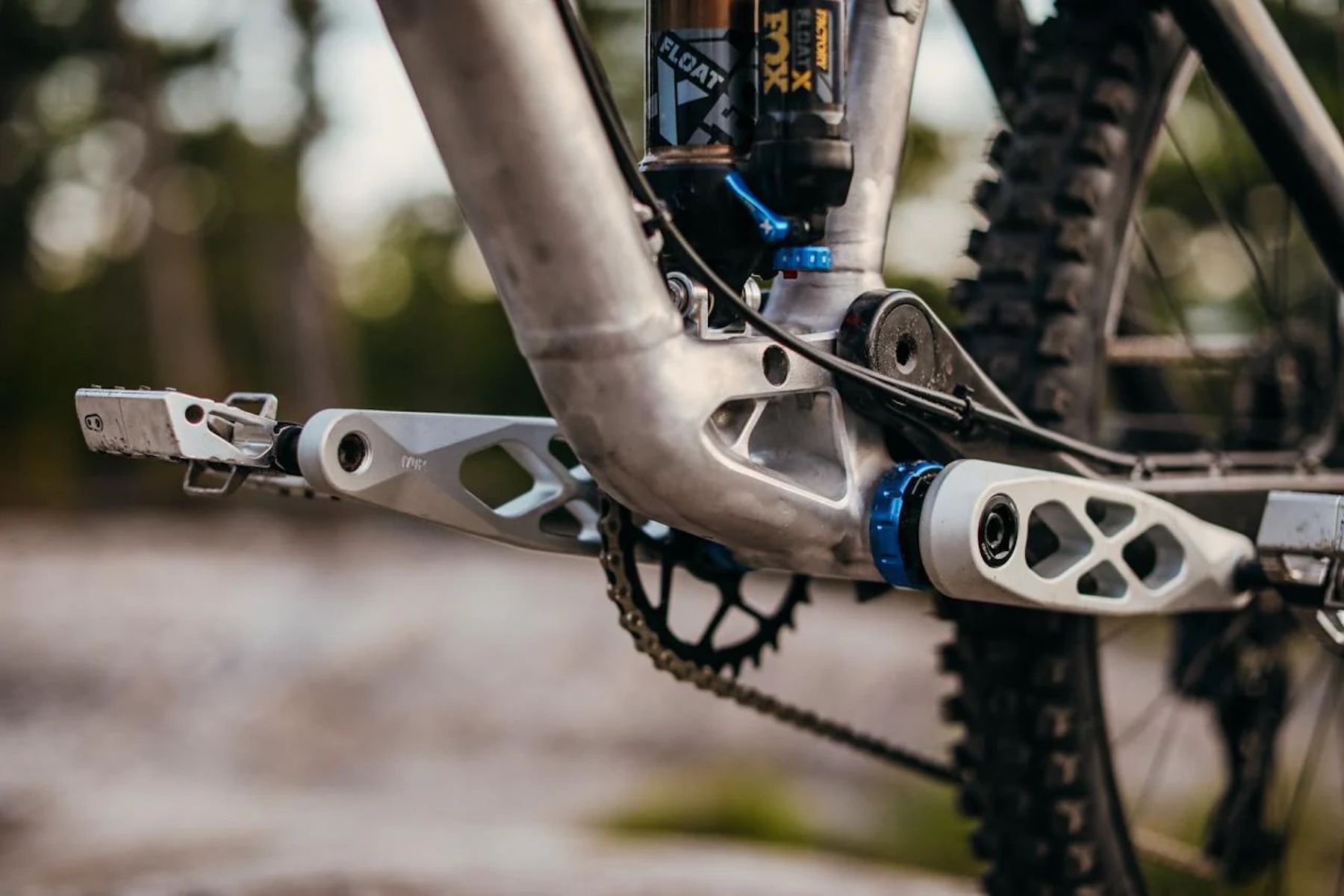
The carbon fiber rear triangle was first seen on the DH frame and allows Frameworks to both create a lighter rear end and preserve tight manufacturing tolerances. The pivot hardware, rocker link, and shock extender are all 7075 T6, selected for its high strength-to-weight ratio. Like the DH frame, the Enduro frame only accommodates mixed wheels — there are no flip chips or other geometry adjustments to mess with here.
Moving on to the suspension design, the Frameworks Enduro uses a four-bar Horst Link suspension layout to crank out 170 mm of rear travel, but again takes some unique queues from the Downhill bike. A beefy machined upper rocker link drives the shock into a one-piece machined bottom bracket junction and shock mount, which uses a sideways-mounted yoke. That yoke means the shock’s reservoir is oriented sideways in the frame, allowing Frameworks to achieve more shock clearance around the downtube.
Frameworks is very transparent about their suspension kinematics, and a closer look at the charts reveals a linear-progressive leverage ratio, middle-of-the-road anti-squat at around 105% at sag, and rather low anti-rise that starts just above 50% and falls to just under 50% at bottom out. Those figures jive with Frameworks’ stated focus on predictability, and we would expect those anti-squat and anti-rise figures to produce a fairly active-feeling suspension under pedaling and braking forces.
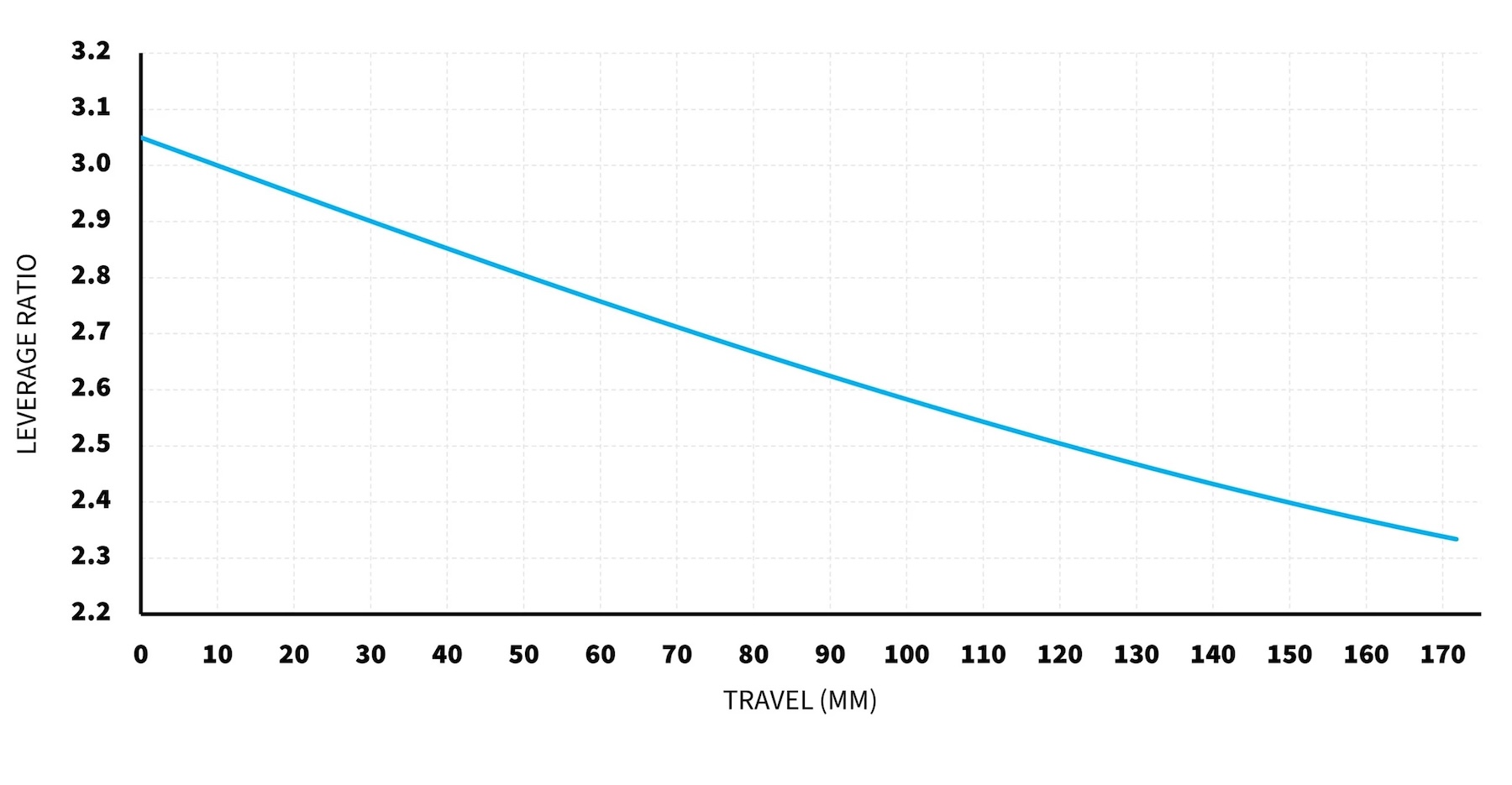
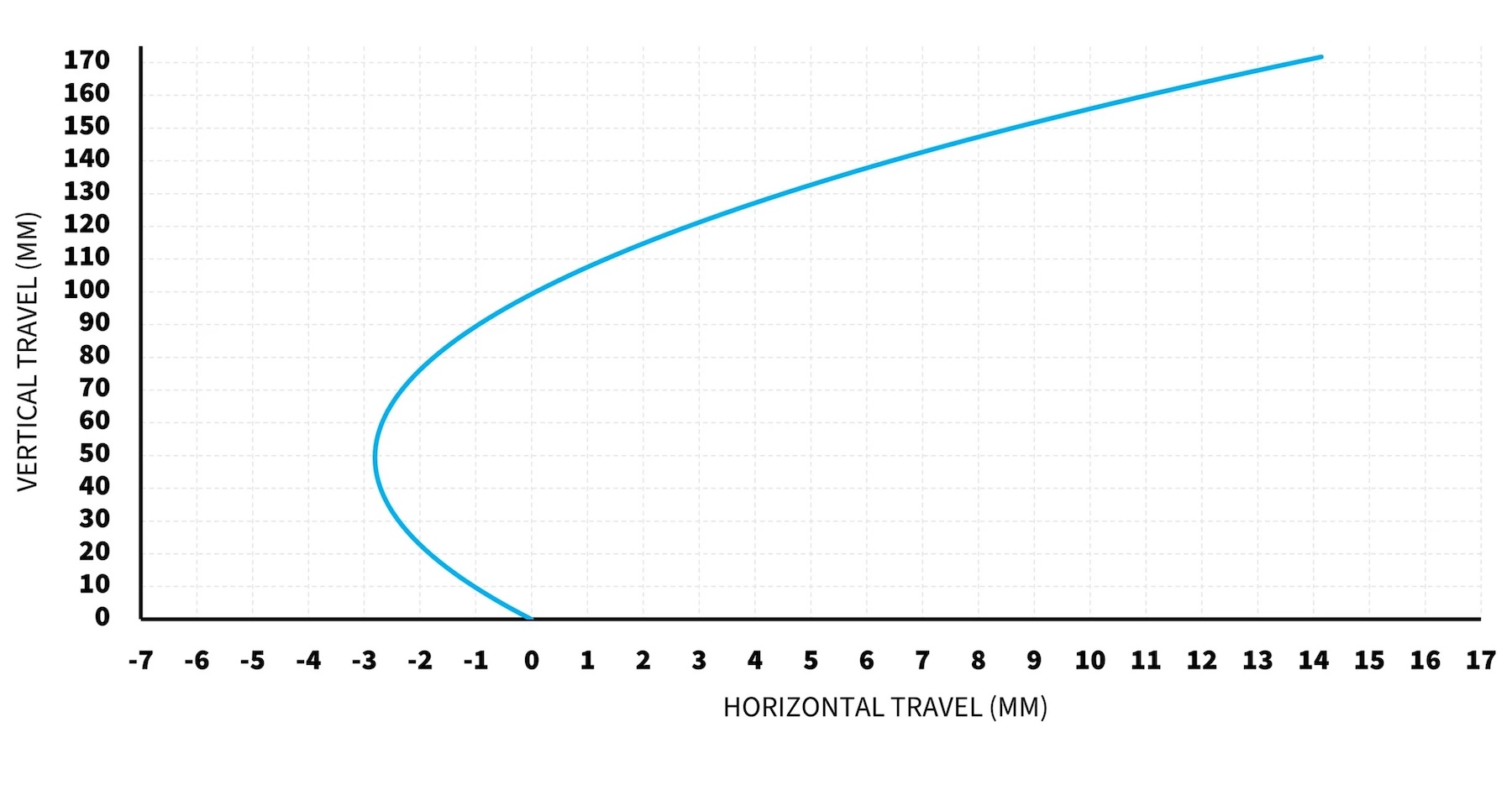
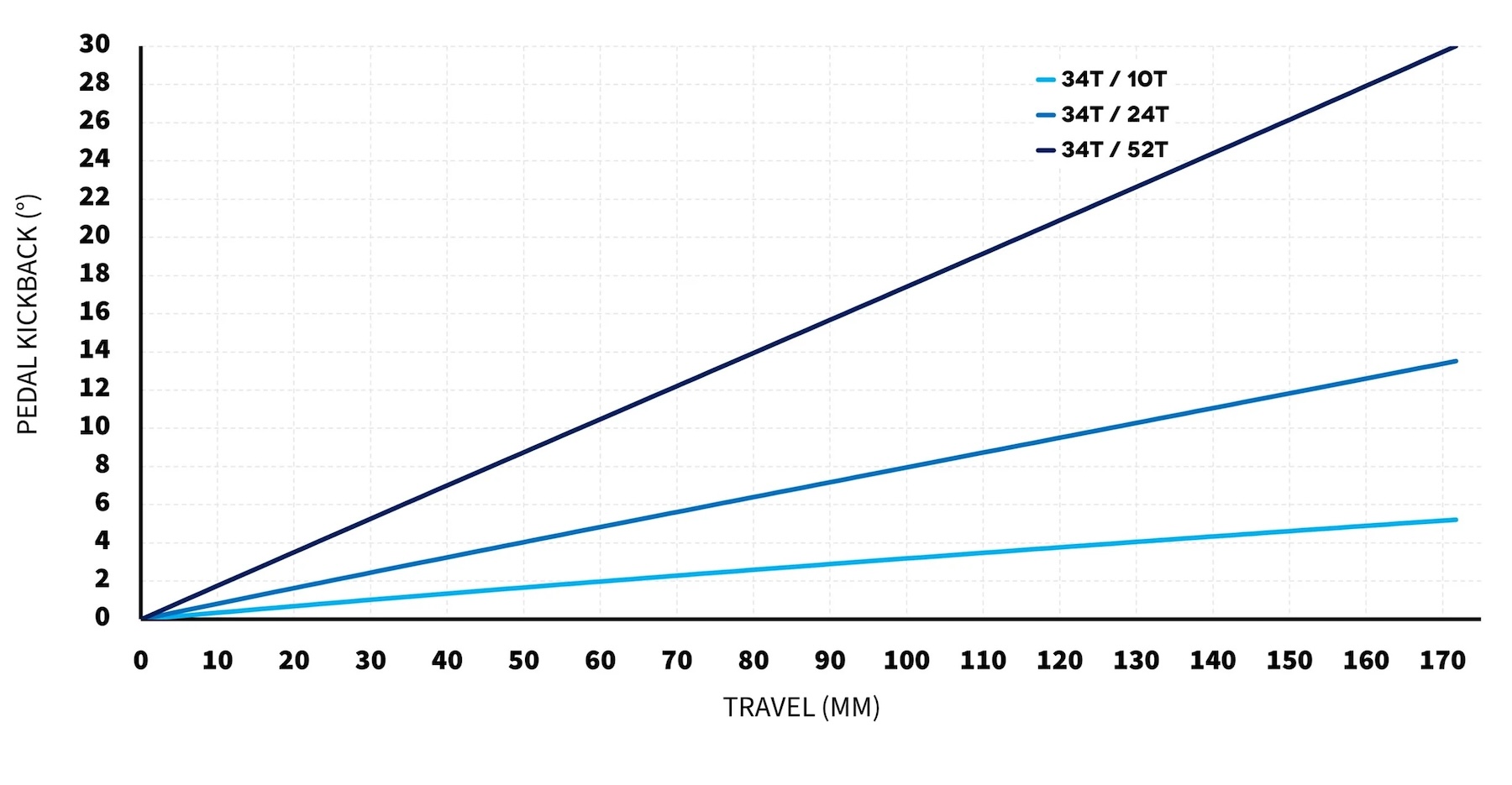
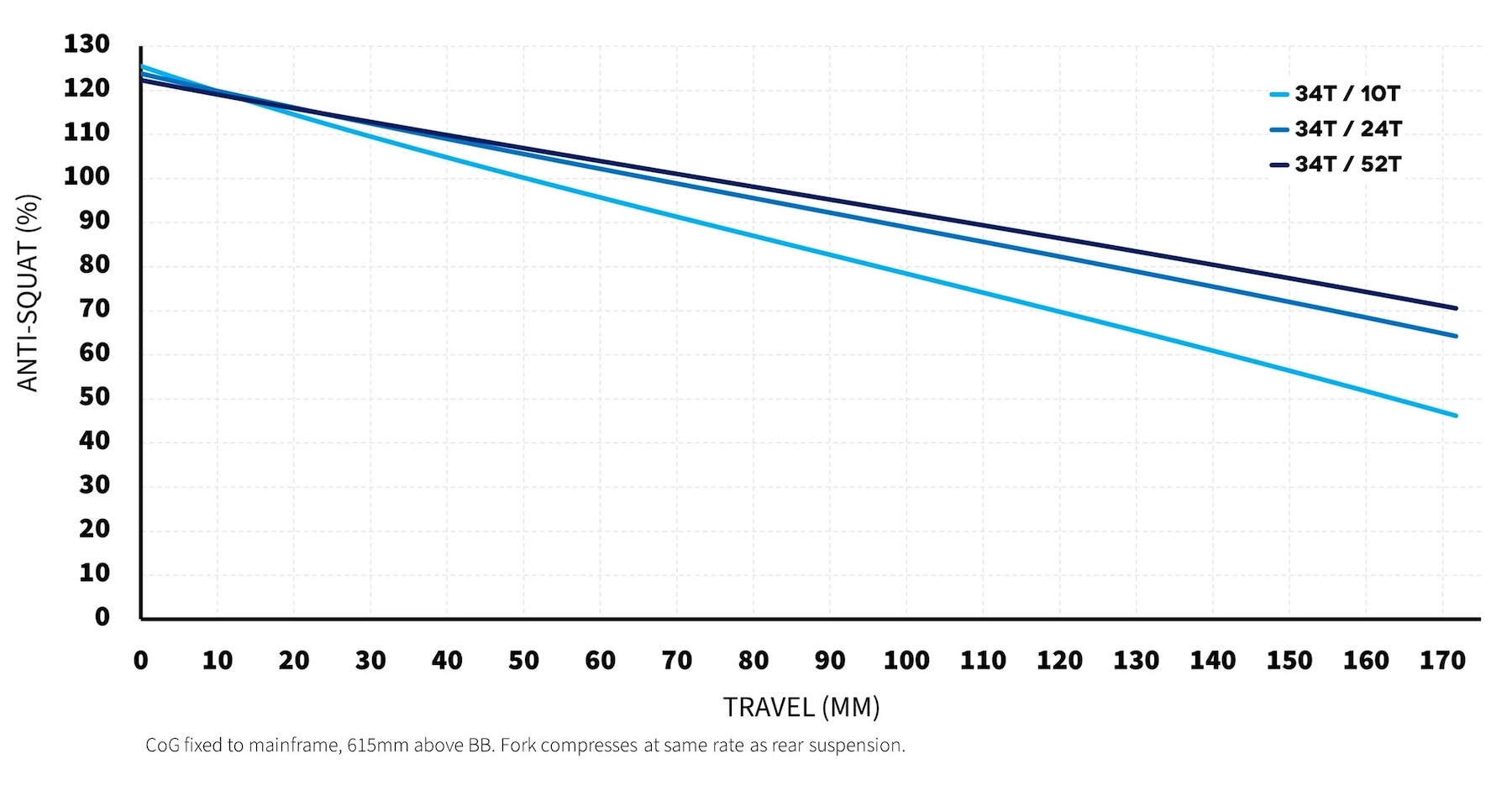
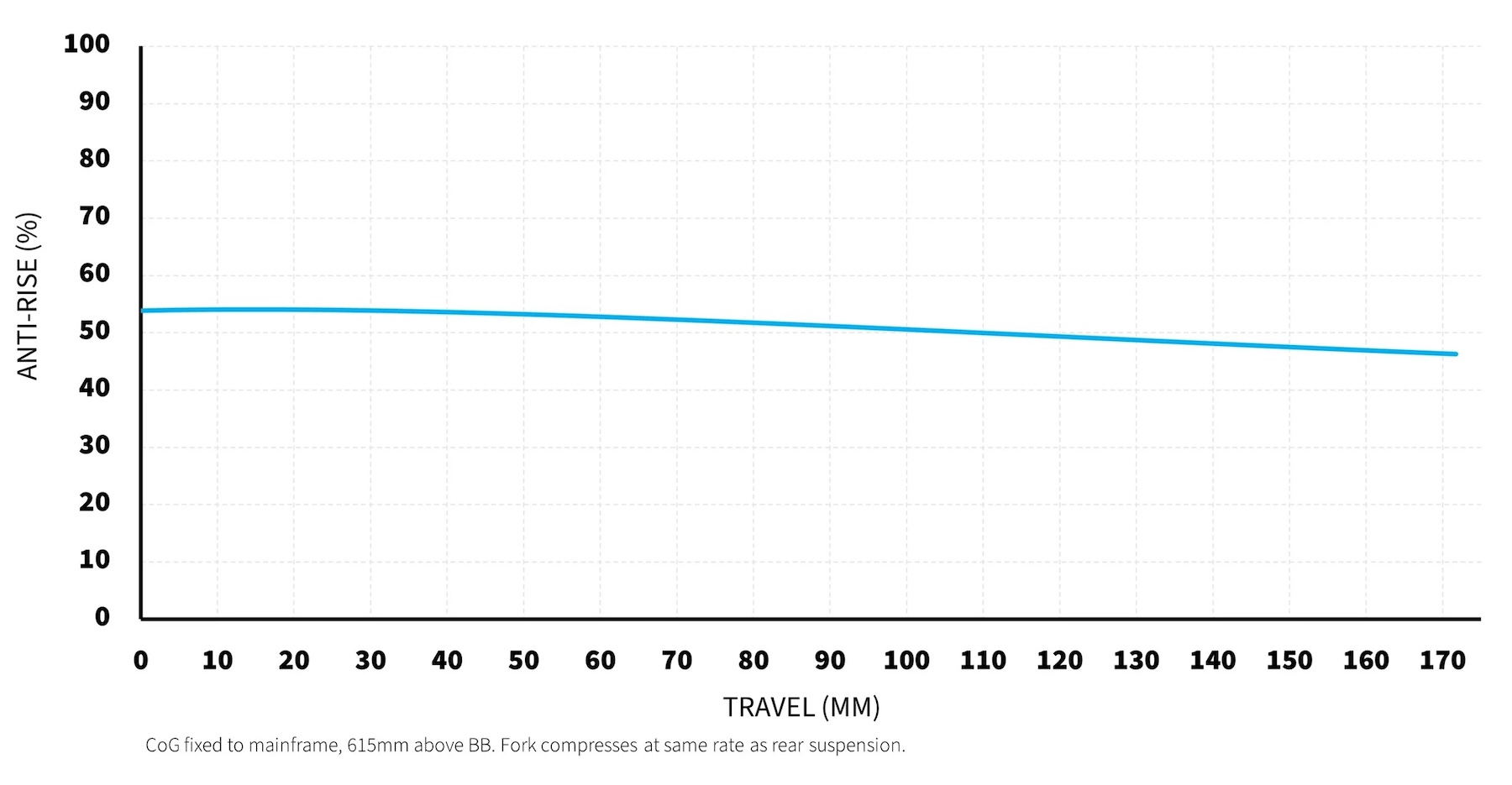
Other details include a 200 mm post mount for the rear brake, a tapered ZS42/ZS56 head tube, a 31.6 mm seat post diameter, and external brake routing. The shift cable does pass through the chainstay, but critically, the brake hose is kept fully external for ease of service — an increasingly rare design choice we’d love to see more of.
Fit & Geometry
The Frameworks Enduro’s descending-oriented intentions are quite clear in looking at the geometry charts. Based around a 170 mm travel fork, the size Large gets a 480 mm reach, 63.75° head tube angle, steep 79.5° effective seat tube angle (at a 750 mm reference saddle height), and a very tall 664 mm stack height. The chainstay length shifts by 5 mm between sizes, with the Large sitting at 455 mm. While that’s solidly on the longer side of things, I explored chainstay length a bit in my Kavenz VHP 16 review, and found myself really enjoying a longer chainstay measurement paired with a 27.5’’ rear wheel.
Frameworks has gone with a rather low bottom bracket height, measuring at 340 mm (with 37 mm drop relative to the front axle). Paired with the very tall 664 mm stack, that should create a fairly upright riding position while also lending stability due to the low center of gravity. Taken together, the Enduro frame’s geometry figures are an interesting blend of contemporary and aggressive — it’s easy to see the descending-focused design ethos here.
Full geometry figures are included in the table below:
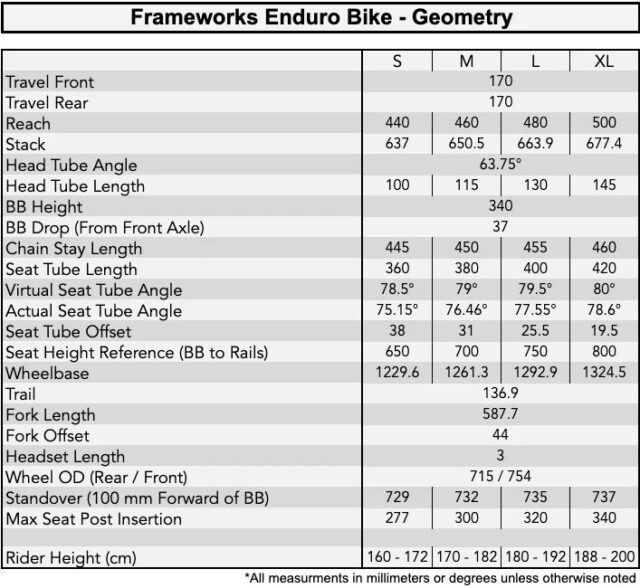
The Build
True to their name, Frameworks is supplying the Enduro as a frame-only option. Buyers have the option of the Fox Float X Factory ($3,999 USD), Rockshox Vivid Air ($4,199 USD) or Ohlins TTX Coil ($4,399 USD), and all frames include a seat post clamp, Cane Creek Hellbender 70 headset, VHS chainstay protection, and a UDH derailleur hanger. Rider weight is specified at the time of purchase, too, so that the Frameworks crew can provide a baseline shock setup.
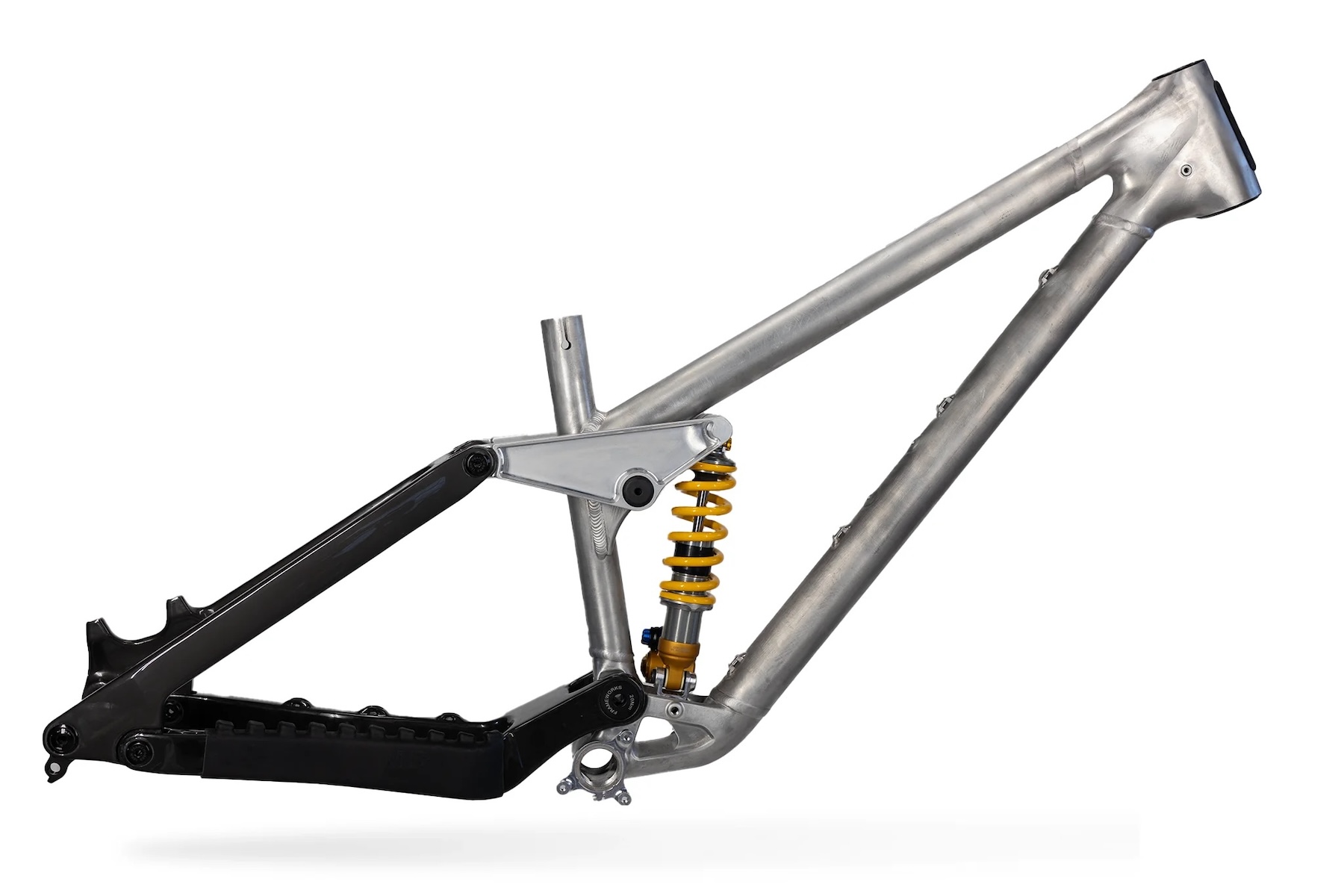
At this point, Frameworks is only planning to produce 100 frames. Pre-orders are expected to remain open until the last week of September (or until sold out), with a projected ship date from their Tennessee shop in mid-December.
For folks who want to pursue a full build, it’s worth mentioning that Frameworks is teaming up with WorldWide Cyclery to provide 10% off MSRP and free assembly of any build kit purchased through the WWC shop. Frameworks has designed GX, XT, and Team Replica builds, or WorldWide Cyclery can help with any level of customization. Frameworks will ship the frame to WorldWide Cyclery for full assembly before it heads to the buyer, and more information is available at WorldWide Cyclery’s Frameworks page.
Some Questions / Things We’re Curious About
(1) The Frameworks Enduro merges some familiar geometry numbers with some more boundary-pushing ones, like the rather tall stack height. How does that geometry combine with suspension performance on the trail, and does it achieve Frameworks’ goal of a predictable, stable ride?
(2) Frameworks isn’t shy about the race-inspired nature of their Enduro bike. Does it feel like a go-fast race bike, or will it have broader appeal to those of us who aren’t going against the clock?
Bottom Line (For Now)
The Frameworks Enduro has been in the works for a while, and the finished product isn’t like anything else on the market. With clear inspiration from the brand’s successful DH frame, the Enduro frame has both unique construction techniques and aggressive geometry while prioritizing durability and predictable handling. While the small batch nature and steep price of entry mean it’s not likely to be a common sight on the trails, the feature set has us rather intrigued — we can’t wait to swing a leg over one to see just what the Frameworks crew has cooked up.

Curious to know what build you go with since this is sold as a frame-only.
If you check out the Worldwide Cyclery link mentioned above, you’ll be able to look into a few different builds that they have pulled together with the Frameworks team. If we do end up getting one we will be curious to see whether it shows up as a complete bike or as a frame that we build up with other parts we already have, but given very limited availability it may take a bit to get our hands on one. Stay tuned!
What a stunningly cool approach. Several things I question in “the numbers” but I’m no enduro pro, so that doesn’t matter…..and I’m wishing these guys nothing but success.
Well, maybe one thing, which would be stack height. Every time I (too frequently) get a bike, I raise the bars a bit from my norm, because internet reading. But the bike always seems to corner kind of stiffly. Then I put the bars back down where I feel they belong, and all is right in the world.
And I find this applies equally to my xc race whip, trail bike, and enduro bike.
There’s certainly a good bit of personal preference at play, but I also think that there are other aspects of the geometry that go into making a tall stack height work well (or not). Combining a big stack with long chainstays is the main one, but a pretty low BB can help too. The Frameworks checks both of those boxes.